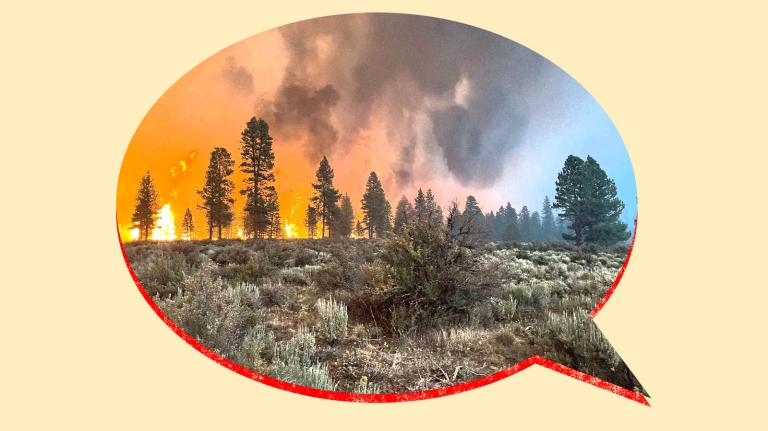It might sound like a low bar, but for those who care about facts, it’s been a long wait: News coverage of climate is finally getting the science right.
A study out this week found that 90 percent of media coverage accurately represented the scientific consensus that human activity is driving global warming, looking at thousands of articles from 2005 to 2019. That’s a sharp change from the last comparable study in 2004, when researchers discovered that more than half of articles treated dissenting opinions as equally valid.
Max Boykoff, a professor of environmental studies at the University of Colorado Boulder and a co-author of both studies, pointed to a handful of reasons for increasing accuracy, including more scientific certainty. Last week’s landmark report from the U.N. Intergovernmental Panel on Climate Change used its most definitive language about the state of climate science ever, with the first line declaring, “It is unequivocal that human influence has warmed the atmosphere, ocean and land.” Boykoff also pointed to advances in attribution science, which can link extreme weather events to climate change, and the growing visibility of amped-up wildfires, heat waves, and other wild weather.
It might be kind of a chicken-and-egg situation: The media reflect their audience and help shape its views. Some 64 percent of Americans now say that reducing the effects of climate change is “a top priority,” according to Pew Research polling. Less than 40 percent gave that response five years ago.
The previous study encompassing press coverage of climate science from 1988 to 2002 found that only 35 percent of it accurately reflected the scientific discourse. At the time, the U.S. media was consistently biasing reporting of the subject by presenting “both sides” of the “debate” as equally valid, according to the analysis. That initial study made a splash, getting cited by Al Gore in An Inconvenient Truth and causing “introspection” among some journalists, Boykoff said. Despite being outdated, his article continued to be referenced nearly two decades later — which was why he figured it was time for an update.
The new study was wider in scope, broadening beyond the United States. Boykoff and other researchers from the University of Colorado Boulder and the Cooperative Institute for Research in Environmental Sciences analyzed articles from 17 major newspapers across the United States, the United Kingdom, Australia, New Zealand, and Canada. Some conservative-leaning outlets, including the Daily Mail in the U.K. and the National Post in Canada, provided accurate coverage around 70 percent of the time. On the other end of the spectrum, Canada’s Toronto Star topped the list for accuracy at 97 percent, followed by The Guardian in the U.K. at 95 percent. Major U.S. outlets like USA Today, The Washington Post, and the New York Times also scored above 90 percent.
That’s still only a slice of media coverage, not the full span of places where people are getting information about climate change — social media and TV as well as conversations with friends and family.
“While there’s good news in the newsprint media, there might be less good news in some of the other media domains,” said Meaghan Daly, a co-author of the study and an assistant professor of environmental studies at the University of New England. Climate change vies for attention with other issues: Broadcast morning TV networks, for example, spent nearly as much time covering Jeff Bezos’ rocket trip to space on one day last month than they did covering climate change for the whole year of 2020.
And although the rhetoric around global warming has changed a lot over the last 20 years, fossil fuel companies aren’t necessarily having a hard time getting their case heard. A study last year found major U.S. newspapers gave twice as much coverage to press releases that opposed climate action compared to those that called for doing something about the crisis. “There are now more subtle ways of undermining action on climate change — so that ranges from looking at the cost of climate solutions to the impossibility of the transformations that are needed,” Daly said.
But when it comes to the facts on climate change, the media appears to be on an upward trajectory. Boykoff and Daly found that accurate coverage of the scientific consensus increased from 87 percent to 92 percent over the 15-year period they studied.




